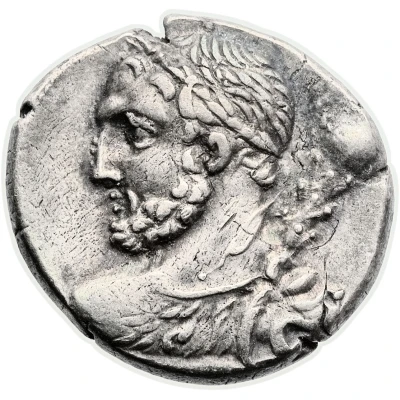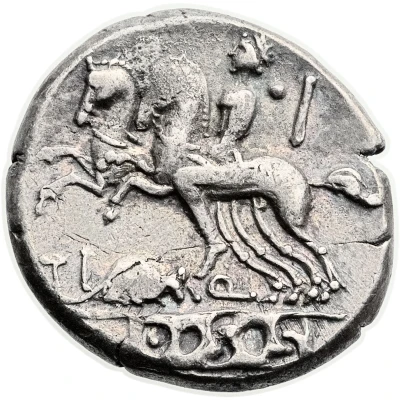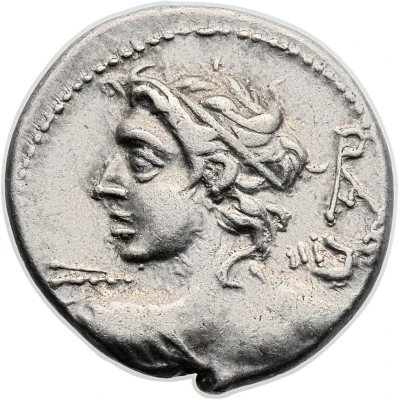


© Heritage Auctions
Denarius Quinctia: Titus Quinctius; TI Q D•S•S 112 BC - 111 BC
| Silver | 3.92 g | 18 mm |
| Issuer | Rome › Roman Republic (509 BC - 27 BC) |
|---|---|
| Period | Republic (509 BC - 27 BC) |
| Type | Standard circulation coin |
| Years | 112 BC - 111 BC |
| Value | Denarius (1) |
| Currency | Denarius of 16 Asses (141 – 27 BC) |
| Composition | Silver |
| Weight | 3.92 g |
| Diameter | 18 mm |
| Shape | Round (irregular) |
| Technique | Hammered |
| Orientation | Variable alignment ↺ |
| Demonetized | Yes |
| Updated | 2024-10-06 |
| Numista | N#66746 |
|---|---|
| Rarity index | 94% |
Reverse
Desultor, nude, laureate, galloping left, a second horse at his right side.
In upper right field, control-letter; below horses, moneyer mark divided by a rat; in exergue, mark of order of the Senate incuse on tablet.
Script: Latin
Lettering:
TI Q
D•S•S
Unabridged legend:
Titus Quinctius
De Senatus Sententia
Translation: By Official Order of the Senate
Comment
The gens Quinctia, sometimes written Quintia, was a patrician family at Rome. Throughout the history of the Republic, its members often held the highest offices of the state, and it produced some men of importance even during the imperial period. For the first forty years after the expulsion of the kings the Quinctii are not mentioned, and the first of the gens who obtained the consulship was Titus Quinctius Capitolinus Barbatus in 471 BC. As with other patrician families, in later times there were also plebeian Quinctii. Some of these may have been the descendants of freedmen of the gens, or of patrician Quinctii who had voluntarily gone over to the plebs. It is related that it was the custom in the Quinctia gens for even the women not to wear any ornaments of gold.Interesting fact
One interesting fact about this coin is that it features a rare portrait of a Roman consul, Titus Quinctius, on the obverse (front side), making it a valuable collector's item for numismatists.



